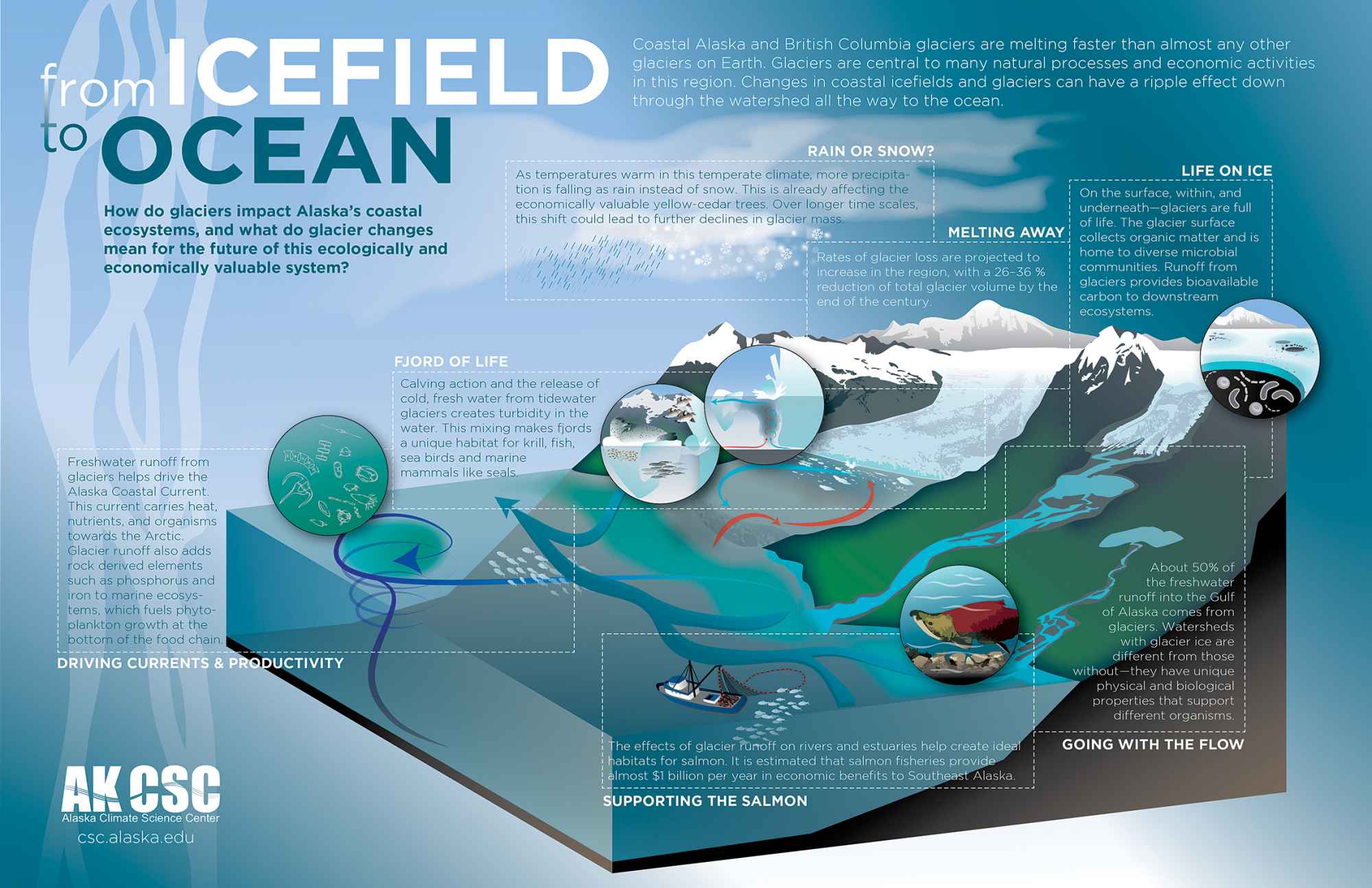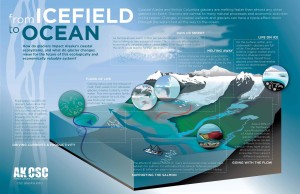Icefield-to-Ocean Linkages across the Northern Pacific Coastal Temperate Rainforest Ecosystem
Alaska’s coastal glaciers are among the most rapidly changing on the planet. They’re also, as U.S. Geological Survey Alaska Climate Science Center communications lead Kristin Timm says, “more than just ice.” Glacial runoff drives ocean currents and supports the habitats of the salmon that local fishermen rely on. In the recent paper, Icefield-to-Ocean Linkages across the Northern Pacific Coastal Temperate Rainforest Ecosystem, published in the journal BioScience and led by Shad O’Neel, also from the Alaska Science Center, synthesizes what scientists currently know about the physical, chemical and biological connections that link high elevation icefields and glaciers, streams, temperate rainforest, and the ocean. Authors discuss impacts of changing climate impacts noting that “rates of glacier mass loss in the northern Pacific coastal temperate rainforest are among the highest on Earth, and changes in glacier volume and extent will affect the flow regime and chemistry of coastal rivers, as well as the nearshore marine ecosystem of the Gulf of Alaska”. You can check out a pdf of the article here. Also, Timm collaborated with glaciologists and ecologists at the center to design this poster, which illustrates the impact of ice fields on both people and the environment. As a special note this poster From Icefield To Ocean won the People’s Choice award for Posters & Graphics at the 2015 Vizzies!


